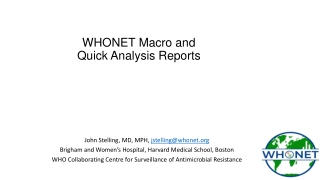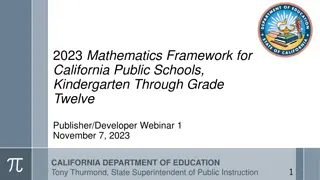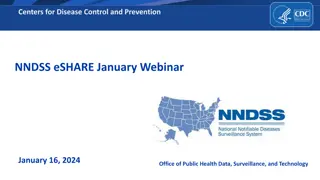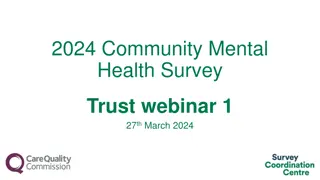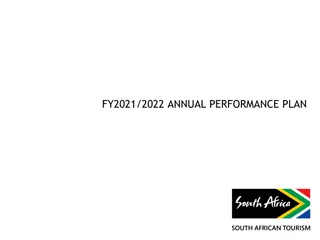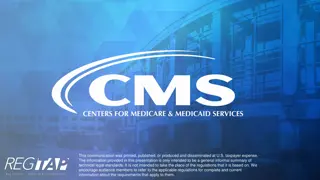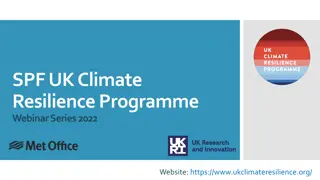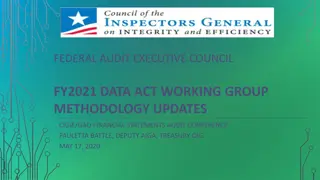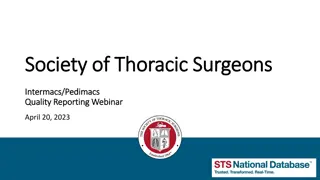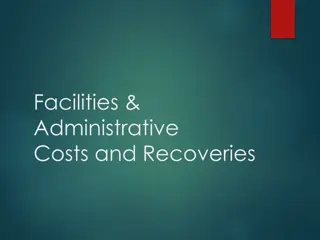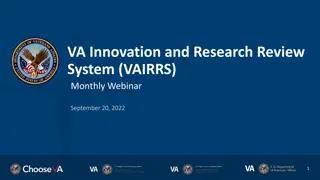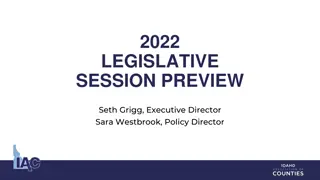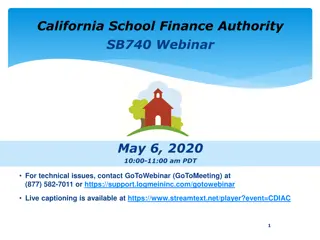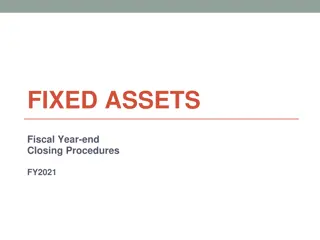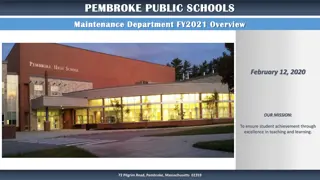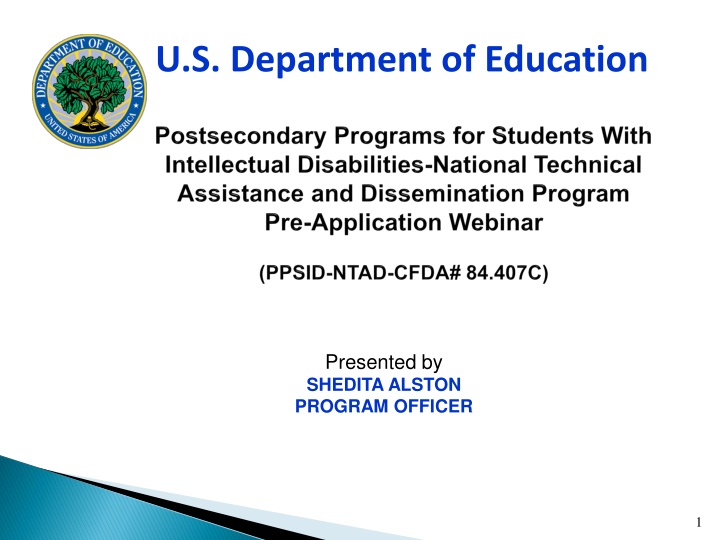
Postsecondary Programs for Students with Intellectual Disabilities
The Postsecondary Programs for Students with Intellectual Disabilities-National Technical Assistance and Dissemination Center (PPSID-NTAD) program aims to improve inclusive postsecondary education for students with intellectual disabilities by establishing a technical assistance center to disseminate research and best practices to institutions of higher education. The program ensures that knowledge gained through research reaches more institutions and students, enhancing postsecondary educational opportunities for students with intellectual disabilities.
Download Presentation

Please find below an Image/Link to download the presentation.
The content on the website is provided AS IS for your information and personal use only. It may not be sold, licensed, or shared on other websites without obtaining consent from the author. If you encounter any issues during the download, it is possible that the publisher has removed the file from their server.
You are allowed to download the files provided on this website for personal or commercial use, subject to the condition that they are used lawfully. All files are the property of their respective owners.
The content on the website is provided AS IS for your information and personal use only. It may not be sold, licensed, or shared on other websites without obtaining consent from the author.
E N D
Presentation Transcript
U.S. Department of Education Presented by SHEDITA ALSTON PROGRAM OFFICER 1
The PPSID-NTAD Program application may be found via: www.Grants.gov CFDA number: PPSID-NTAD is 84.407C; Opportunity number: PPSID-NTAD program is 080521-001 US Dept of Education- Office of Postsecondary Education 2
The Postsecondary Programs for Students with Intellectual Disabilities-National Technical Assistance and Dissemination Center (PPSID-NTAD) program provides for the establishment of a technical assistance center to translate and disseminate research and best practices for all institutions of higher education (IHEs), including those not participating in the Transition and Postsecondary Programs for Students with Intellectual Disabilities (TPSID-CFDA # 84.407A) program, for improving inclusive postsecondary education for students with intellectual disabilities (SWIDs). US Dept of Education- Office of Postsecondary Education 4
This center will help ensure that knowledge and products gained through research will reach more IHEs and students and improve postsecondary educational opportunities SWIDs. The PPSID-NTAD program will help ensure that knowledge and products gained through research will reach more IHEs and students and improve postsecondary educational opportunities SWIDs. US Dept of Education- Office of Postsecondary Education 5
PPSID-NTAD Program Departments of Labor, Health and Human Services, and Education and Related Agencies Appropriations Act, 2021, H.R. 7614, 116th Congress (2020); the explanatory statement accompanying H.R. 7614, Congressional Record, December 21, 2020, H8635. US Dept of Education- Office of Postsecondary Education 6
PPSID-NTAD Program Applicable Regulations: (a) The Education Department General Administrative Regulations in 34 CFR parts 75, 77, 79, 82, 84, 86, 97, 98, and 99. (b) The Office of Management and Budget Guidelines to Agencies on Governmentwide Debarment and Suspension (Nonprocurement) in 2 CFR 180, as adopted and amended as regulations of the Department in 2 CFR part 3485. (c) The Uniform Administrative Requirements, Cost Principles, and Audit Requirements for Federal Awards in 2 CFR part 200, as adopted and amended as regulations of the Department in 2 CFR part 3474. US Dept of Education- Office of Postsecondary Education 7
ELIGIBLE APPLICANT INFORMATION: An entity, or partnership of entities, that has demonstrated expertise in the fields of (a) Higher education; (b) The education of SWIDS; (c) The development of comprehensive transition and postsecondary programs for students SWIDs; and (d) Evaluation and technical assistance. US Dept of Education- Office of Postsecondary Education 8
ELIGIBLE APPLICANT INFORMATION (continued): Please note: For Profit/Proprietary schools are not eligible applicants for a grant under the PPSID-NTAD program because they are not eligible to apply for non-Title IV grants. US Dept of Education- Office of Postsecondary Education 9
There are EIGHT PPSID-NTAD Program Highlights. Highlight #1- The application deadline is_______________. Highlight #2- Available Funds: $1,980,000. Highlight #3- Project period up to 36 months (3 years). Highlight #4- There is one absolute priority and one competitive priority. There is no invitational priority under this program. US Dept of Education, Office of Postsecondary Education 10
Highlight #4 (continued) The PPSID-NTAD Program has ZERO Invitational priorities. The specific language for each priority may be found in the Notice Inviting Applications for the PPSID-NTAD program or in the PPSID-NTAD program application. US Dept of Education, Office of Postsecondary Education 11
The TPSID Program Funding Information (Continued): Highlight #5-The PPSID-NTAD program willmake ONE award. Highlight #6- ThePPSID-NTADproject will begin on October 1, 2021 (Year one may not be used as a planning year. The funded PPSID-NTAD project must begin their ED-approved grant proposal activities on October 1, 2021). US Dept of Education, Office of Postsecondary Education 12
Highlight #7-The PPSID-NTAD Program does not have a matching requirement. US Dept of Education, Office of Postsecondary Education 13
Highlight #7 (Continued)- For Applicants Who Decide To Commit To A Voluntary Match: Voluntary Match: The voluntary match (which is comprised only of total direct funds) can not be met with federal funds. US Dept of Education, Office of Postsecondary Education 14
Highlight #7 (Continued)- For Applicants Who Decide To Commit To A Voluntary Match: Voluntary Match: If funded, applicants that voluntarily include a matching percentage/amount, regardless of size, will be required to meet their proposed matching percentage/amount, as proposed, for each year of their PPSID-NTAD project period, regardless of any changes that could affect your IHE s ability to do so. Please note that your voluntary matching requirement may be met via cash, or in-kind contribution (such as space, equipment, personnel). Donated time may be used as cost share because the person(s) working on the PPSID-NTAD grant are not being paid for the time that they are working. US Dept of Education, Office of Postsecondary Education 15
The PPSID-NTAD Program Voluntary Match (continued): Highlight #7-SPECIAL NOTE AS IT RELATES TO APPLICANTS THAT COMMIT TO CONTRIBUTING A VOLUNTARY MATCHING REQUIREMENT AND YOUR PARTNERSHIPS: If your project is funded, and one of your partners neglects to fully meet their commitments that were outlined in your project s specific Memo of Understanding (MOU) with them, please note that the lead applicant is responsible for developing/implementing a plan for completing the activities that the vacated partner is no longer providing (as outlined in your approved Memo of Understanding (MOU). Additionally, if one of your project partners leaves the partnership, the lead applicant must develop a plan for still meeting that partner s portion of the voluntary matching requirement. US Dept of Education, Office of Postsecondary Education 16
Highlight #7: The PPSID-NTAD Program Voluntary Match (continued): Regular written communication with each of your partners will help to minimize the lead applicant s potential risk of not being aware of potential situations that are similar to what has been mentioned here. Written documentation of potential issues, which includes your mitigation measures and the outcomes of such measures, will need to be shared with your PPSID-NTAD program officer in a timely manner, via a separate email (and not embedded in the annual performance report). US Dept of Education, Office of Postsecondary Education 17
Highlight #8: Indirect Cost Rate Indirect Cost Rate: The PPSID-NTAD program uses a restricted indirect cost rate of 8%. For more information regarding indirect costs, or to obtain a negotiated indirect cost rate, please see www2.ed.gov/about/offices/list/ocfo/intro.html. ED regulations limit recovery of costs for the PPSID-NTAD program to the grantee s indirect cost rate or 8% of a modified total direct cost base, whichever is lower. This limitation to 8% indirect costs does not apply to state and local governments, including Federally recognized Indian tribal governments. EDGAR 34 CFR 75.562(c). US Dept of Education, Office of Postsecondary Education 18
Highlight #8 (Continued) Indirect Cost Rate For the purposes of calculating indirect costs for this grant program, EDGAR CFR 75.562(c) defines modified total direct cost base as total direct costs less stipends, tuition and related fees, and capital expenditures of $5,000 or more. This limitation on indirect cost reimbursement for this grant program does not apply to states, agencies of local governments, or federally recognized Indian tribal governments. However, the 8% limit applies to cost type contracts under grants, as defined in EDGAR 34 CFR 75.562(c)(2). US Dept of Education, Office of Postsecondary Education 19
This Absolute Priority is: The purpose of this priority is to fund a cooperative agreement to establish and operate a National Technical Assistance Center for Postsecondary Programs for Students with Intellectual Disabilities (Center). This Center will translate and disseminate to institutions of higher education (IHEs) research and best practices for improving inclusive postsecondary education for (SWIDs). US Dept of Education- Office of Postsecondary Education 21
In responding to this absolute priority, there are SIX points the applicants plan must describe. Those six points are as follows: (1) How the Center will translate and disseminate to all IHEs, including those not participating in the TPSID program and those not currently offering Comprehensive Transition Programs, research and best practices for improving inclusive postsecondary education for SWIDs; (2) How the Center will assist IHEs, including IHEs that do not currently have CTPs, in the development, evaluation, and continuous improvement of such programs; (3) How the Center will assist IHEs in the expansion of inclusive practices for SWIDs across a wide range of academic programs; US Dept of Education- Office of Postsecondary Education 22
In responding to this absolute priority, there are SIX points the applicants plan must describe. Those six points are as follows: (4) How the Center will promote improved academic, social, independent living, and self-advocacy outcomes for SWIDs; (5) How the Center will increase the capacity of faculty, campus service providers, and families to meet the needs of SWIDs; and (6) How the Center will coordinate with other federally funded technical assistance centers to avoid duplication of activities. US Dept of Education- Office of Postsecondary Education 23
In responding to this absolute priority, there are SIX points the applicants plan must describe. Those six points are as follows: (1) How the Center will translate and disseminate to all IHEs, including those not participating in the TPSID program and those not currently offering Comprehensive Transition Programs, research and best practices for improving inclusive postsecondary education for SWIDs; This plan should describe how data-driven knowledge and resources can be applied to and made available to non-TPSID program comprehensive transition programs. This plan should include how the applicant will disseminate data that can be translated into resources and tools which are applicable to comprehensive transition programs. US Dept of Education- Office of Postsecondary Education 24
In responding to this absolute priority, there are SIX points the applicants plan must describe. Those six points are as follows: (1) How the Center will translate and disseminate to all IHEs, including those not participating in the TPSID program and those not currently offering Comprehensive Transition Programs, research and best practices for improving inclusive postsecondary education for SWIDs; An example of a tool that this plan could consider is a map of the United States which identifies both TPSID and non-TPSID-CTP programs. This map could identify non- TPSID comprehensive transition programs (CTPs), TPSID projects and TPSID projects that have received Federal Student Aid (FSA) approval to offer federal student aid to their students with intellectual disabilities who meet the eligibility requirements to receive it. Such a map could also assist with the facilitation of dialogue/networking amongst all CTP programs (which includes TPSID and non-TPSID projects, as well as current and former TPSID projects). US Dept of Education- Office of Postsecondary Education 25
In responding to this absolute priority, there are SIX points the applicants plan must describe. Those six points are as follows: (2) How the Center will assist IHEs, including IHEs that do not currently have CTPs, in the development, evaluation, and continuous improvement of such programs; This plan will include a description of how the Center will organize information and resources on CTP program development so that all CTP programs will be aware of barriers to providing supports to SWIDs, as they interface with colleges and universities. US Dept of Education- Office of Postsecondary Education 26
In responding to this absolute priority, there are SIX points the applicants plan must describe. Those six points are as follows: (2) How the Center will assist IHEs, including IHEs that do not currently have CTPs, in the development, evaluation, and continuous improvement of such programs; Consider collaborating with the TPSID-CC to disseminate TPSID program evaluation findings that has been collected such as non-PII (Personally Identifiable Information) participant level student data including demographics, courses attended, supports provided, residential experiences, career development and employment, retention and credential attainment. Consider collaborating with the TPSID-CC to disseminate TPSID program evaluation findings that has already been collected by the TPSID-CC, as it relates to TPSID program data from colleges and universities across the U.S. in the areas of academic programs, meaningful credentials, CTP program integration with IHEs, strategic partnerships and financial sustainability. US Dept of Education- Office of Postsecondary Education 27
In responding to this absolute priority, there are SIX points the applicants plan must describe. Those six points are as follows: (2) How the Center will assist IHEs, including IHEs that do not currently have CTPs, in the development, evaluation, and continuous improvement of such programs; This plan will also include a description of the team or entity that will guide the dissemination of the data-driven resources and information. US Dept of Education- Office of Postsecondary Education 28
In responding to this absolute priority, there are SIX points the applicants plan must describe. Those six points are as follows: How the Center will assist IHEs in the expansion of inclusive practices for SWIDs across a wide range of academic programs; This plan must include a description of how the Center plans to promote and disseminate information and resources that facilitates cross collaboration/partnershipsbetween faculty, staff and departments within respective IHEs, in order to increase access to and the awareness of inclusive practices for SWIDs For Example: Dissemination of resources covering topics such as Universal Design for Learning and the role of technology in creating greater access to and success in courses). US Dept of Education- Office of Postsecondary Education 29
In responding to this absolute priority, there are SIX points the applicants plan must describe. Those six points are as follows: (4) How the Center will promote improved academic, social, independent living, and self-advocacy outcomes for SWIDs; This plan must describe how it will disseminate information and resources so that SWIDs may demonstrate their previous learning to employers or build on their learning in future higher education experiences An example of tangible evidence that SWIDs may use to demonstrate their previous learning to employers and/or to build upon their learning in future higher education experience in support of improved academic, social, independent living and self- advocacy outcomes for SWIDs is: Information and/or resources that builds and expands the number of institutions of higher education recognized meaningful credentials, as well as transcript development that reflects courses completed by SWIDs. US Dept of Education- Office of Postsecondary Education 30
In responding to this absolute priority, there are SIX points the applicants plan must describe. Those six points are as follows: (4) How the Center will promote improved academic, social, independent living, and self-advocacy outcomes for SWIDs; Consider disseminating information and resources that address: Career development and employment that better ensures that SWIDs are prepared for their jobs/careers of interest via a variety of activities, including such activities as providing access to job coaches/developers; offering internships, service learning opportunities, and paid work experiences, and connecting with service providers to sustain employment. US Dept of Education- Office of Postsecondary Education 31
In responding to this absolute priority, there are SIX points the applicants plan must describe. Those six points are as follows: (5) How the Center will increase the capacity of faculty, campus service providers, and families to meet the needs of SWIDs. This plan must describe how it will disseminate information and resources that prepare and assess faculty, campus service providers and families who support students with intellectual disabilities to the fullest extent possible, as they attend college alongside their non-disabled peers. US Dept of Education- Office of Postsecondary Education 32
In responding to this absolute priority, there are SIX points the applicants plan must describe. Those six points are as follows: (5) How the Center will increase the capacity of faculty, campus service providers, and families to meet the needs of SWIDs. An example of capacity increasing information and resources that can be disseminated to faculty, campus service providers and families is as follows: Best practices in student engagement for SWIDs in the following areas: (a) Hybrid/virtual learning; (b) Virtual campus resources (like academic and curriculum advising, career and tutoring services, mentoring; (c )Social activities with their non-disabled peers that have moved online and keep students with intellectual disabilities connected. Such information could be helpful to comprehensive transition programs in support of such areas of as enrollment, retention and completion rates for students with intellectual disabilities; (d) Virtual employment activities (like virtual job shadowing virtual company tools and industry chats). US Dept of Education- Office of Postsecondary Education 33
In responding to this absolute priority, there are SIX points the applicants plan must describe. Those six points are as follows: (5) How the Center will increase the capacity of faculty, campus service providers, and families to meet the needs of SWIDs. Consider disseminating information and resources that address: (1) When and what stakeholders are included in the development of person centered supports for SWIDs; (2) How often and by whom will student supports that are provided by faculty, campus service providers and families be assessed and revised accordingly. (3) Roles and expectations of SWIDs and their families as SWIDs learn in-person, remotely and/or via a hybrid format; US Dept of Education- Office of Postsecondary Education 34
In responding to this absolute priority, there are SIX points the applicants plan must describe. Those six points are as follows: (5) How the Center will increase the capacity of faculty, campus service providers, and families to meet the needs of SWIDs. Consider disseminating information and resources that address: How IHE campus service providers may assist SWIDs to acclimate to college by working to help them to identify, access, use and navigate college resources and coursework alongside their non-disabled peers; How campus service providers can assist SWIDs to select courses that meet their respective individualized programs of study goals, and that leads to the achievement of their academic learning outcomes, alongside their non-disabled peers. US Dept of Education- Office of Postsecondary Education 35
In responding to this absolute priority, there are SIX points the applicants plan must describe. Those six points are as follows: (6) How the Center will coordinate with other federally funded technical assistance centers to avoid duplication of activities. This plan must describe how the coordination and collaboration efforts of this Center aligns with other federally funded technical assistance centers. This plan must describe how the alignment, coordination and collaboration efforts with other federally funded technical assistance centers will support the access, resources and usage of this information beyond federal funding for this project. US Dept of Education- Office of Postsecondary Education 36
There is one competitive preference priority under the PPSID-NTAD program: This Competitive Preference Priority is: Projects designed to develop and sustain partnerships between IHEs, businesses, LEAs, vocational rehabilitation agencies, community-based organizations, or other non-profit organizations to support improved academic, social, independent living, and self-advocacy outcomes for SWIDs. US Dept of Education- Office of Postsecondary Education 38
There is one competitive preference priority under the PPSID-NTAD program: This Competitive Preference Priority is: Projects designed to develop and sustain partnerships between IHEs, businesses, LEAs, vocational rehabilitation agencies, community-based organizations, or other non-profit organizations to support improved academic, social, independent living, and self-advocacy outcomes for SWIDs. Pages 8-9 of the PPSID-NTAD application provides a breakdown of how applicants may earn up to a total of six points under this competitive preference priority. US Dept of Education- Office of Postsecondary Education 39
If you receive an FY 2021 new grant award, grantees are required to submit annual performance reports for each year of the three-year project period. For specific requirements on reporting, please go to www.ed.gov/fund/grant/apply/appforms/appforms.html. Please reference page 10 of the PPSID-NTAD application for more information reporting requirements. US Dept of Education- Office of Postsecondary Education 41
As applicants address the Quality of the Project Evaluation selection criteria described in Part III: Instructions for Completing the Project Narrative section of this application, elements to address via your project evaluation activities must include, at a minimum, the following FIVE expected outcomes: (1) Increased accessibility to postsecondary education courses, including courses conducted in-person and through remote learning, for SWIDs. (2) Increased participation of SWIDs in the same curriculum offered to matriculating college students without intellectual disabilities. US Dept of Education- Office of Postsecondary Education 43
As applicants address the Quality of the Project Evaluation selection criteria described in Part III: Instructions for Completing the Project Narrative section of this application, elements to address via your project evaluation activities must include, at a minimum, the following FIVE expected outcomes: (3) Increased availability for SWIDs of the same campus services and events offered to matriculating students without intellectual disabilities (such as academic and career advising, on-campus residential living that is not restricted to matriculating college students, employment, and student orientation). (4) An increased number of IHEs offering CTPs for SWIDs. (5) An increased number of SWIDs obtaining a meaningful postsecondary credential each year. US Dept of Education- Office of Postsecondary Education 44
During the FY 2021 new grant competition, the page limitation is recommended, not mandated Please note: Although the page limitation is of 50 pages is recommended, applicants are asked to consider adhering to the recommended page limitations, specifically from the vantage point of potential peer reviewers. US Dept of Education- Office of Postsecondary Education 46
The application narrative is where you, the applicant, address the selection criteria that reviewers use to evaluate your application. US Dept of Education- Office of Postsecondary Education 47
Please include a separate heading when responding to the absolute priority and the competitive preference priority. US Dept of Education- Office of Postsecondary Education 48
Applicants must follow the formatting that are outlined in the published FY 2021 Notice Inviting Applications for the PPSID-NTAD program. US Dept of Education- Office of Postsecondary Education 49
The Budget Narrative: The budget narrative is not counted towards the PPSID-NTAD program application narrative recommended page limitation (even though it is housed in this area of the PPSID-NTAD application package). Each page of the budget narrative must be numbered by the applicant and uploaded into the "Adequacy of Resources" section of the PPSID- NTAD application. Please follow the instructions for the recommended 50-page limitation that was outlined in the application package. US Dept of Education- Office of Postsecondary Education 50

